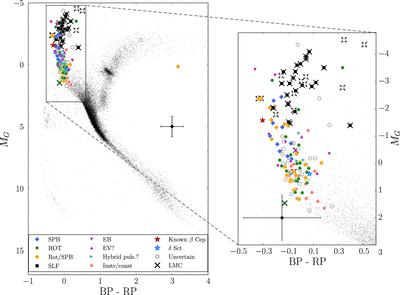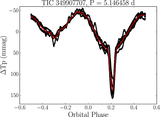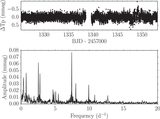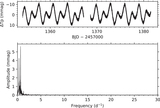Image Details

Caption: Figure 1.
Classification results for O and B stars placed in a Gaia second data release (DR2) color–magnitude diagram (CMD). Black dots are the entire Transiting Exoplanet Survey Satellite (TESS) sector 1 and 2 short-cadence stars also observed by Gaia, and open black circles corresponds to uncertain classification. The labels in the legend correspond to the following types of variability: SLF = stochastic low-frequency signal; Instr/const = instrumental or constant; SPB = slowly pulsating B star; ROT = rotational modulation; ROT/SPB = rotational modulation and/or SPB; Hybrid puls.? = both p- and g-modes; EB = eclipsing binary; EV? = ellipsodal variable or rotational modulation; δ Sct = δ Scuti star. The error bar shows a typical 2σ-error on the position in the CMD, shown in both panels. Large Magellanic Cloud members are indicated by an × behind their variability symbol.
Copyright and Terms & Conditions
© 2019. The American Astronomical Society. All rights reserved.






